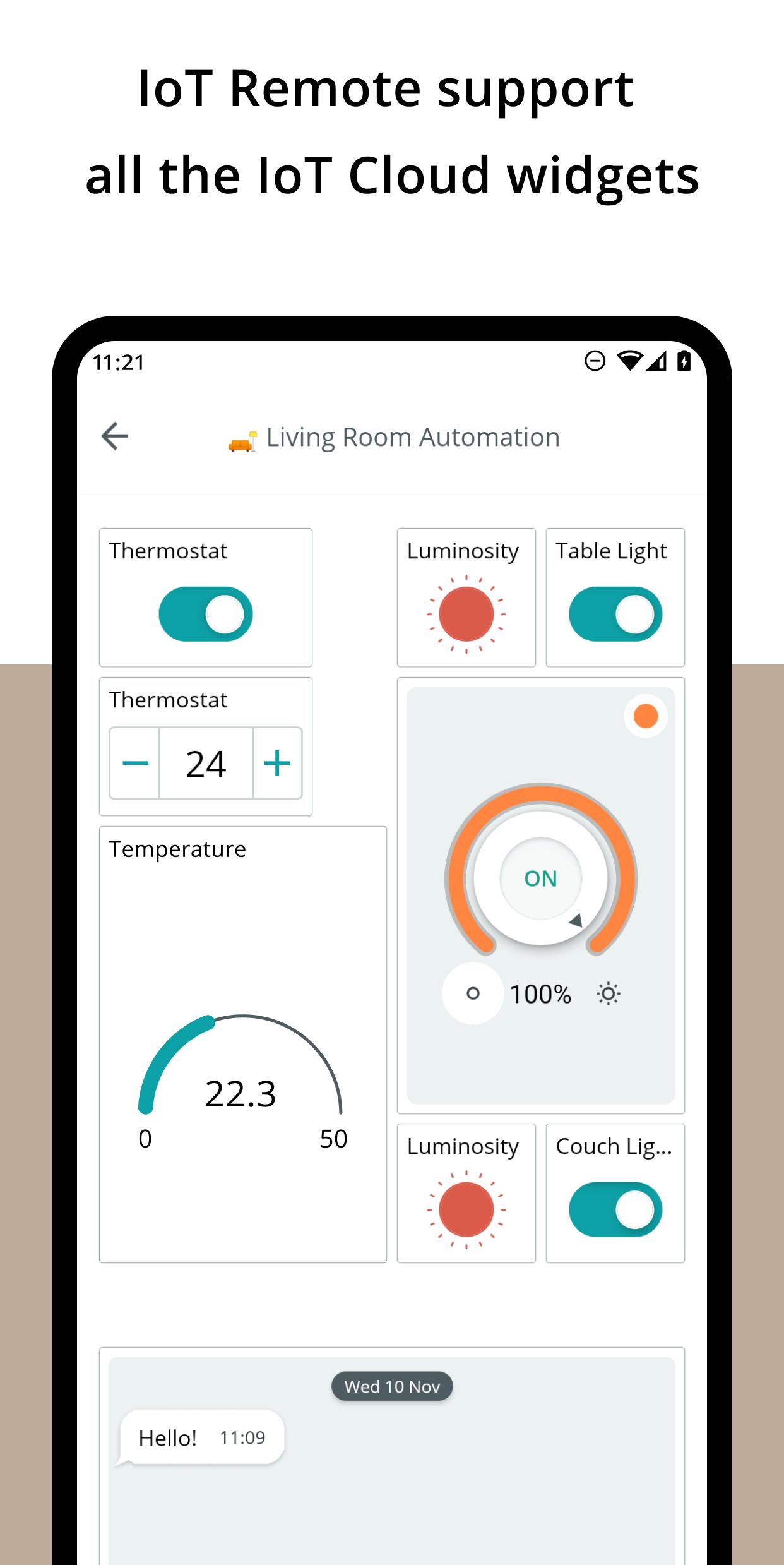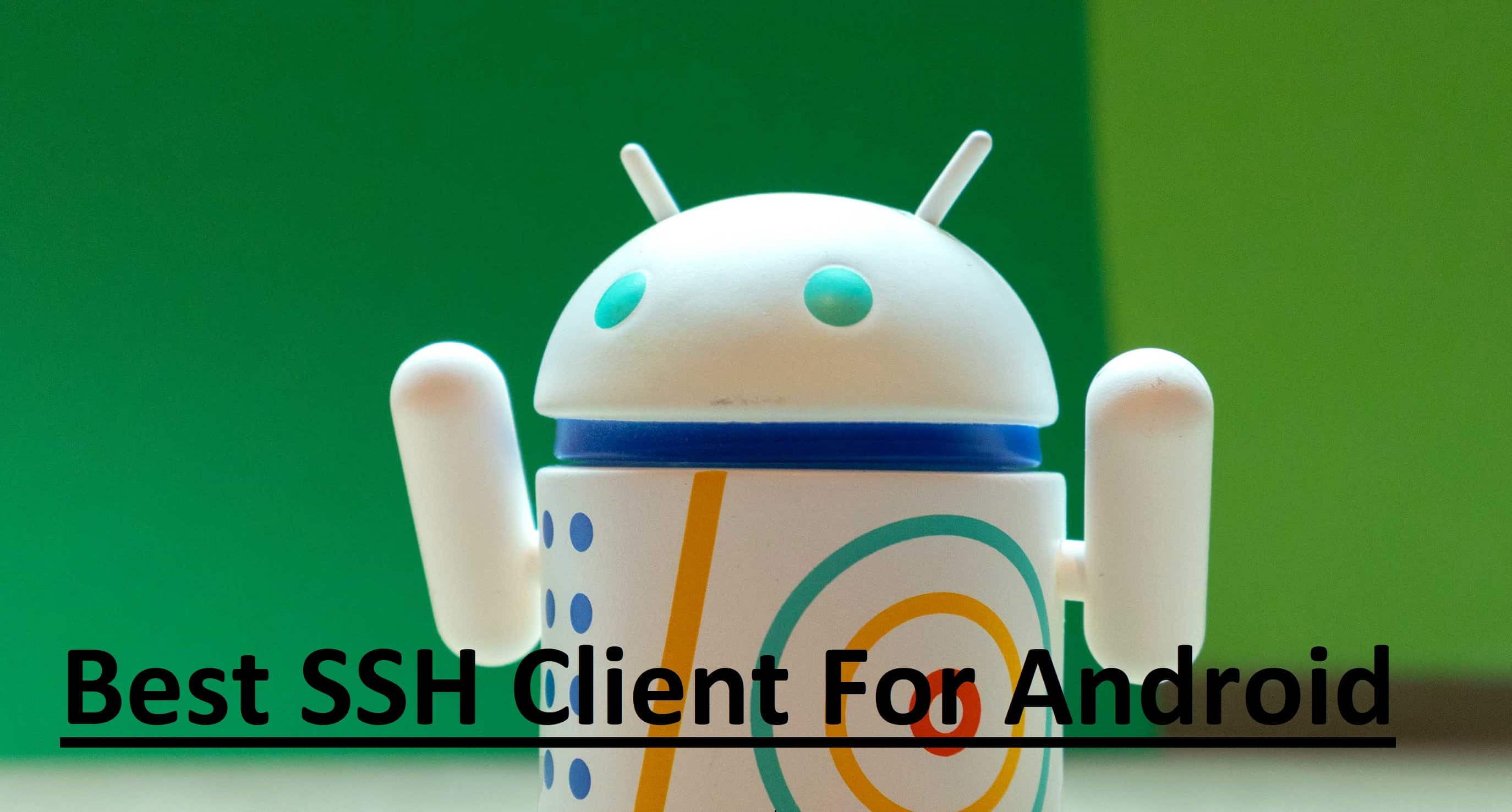Master SSH Remote IoT On Android: Your APK Guide
Are you ready to transform your Android smartphone into a command center for your smart devices? The SSH Remote IoT Device Android APK is the key to unlocking unprecedented control and flexibility over your connected world.
In today's increasingly connected world, the Internet of Things (IoT) has woven itself into the fabric of our lives. From smart home appliances to industrial sensors, IoT devices are generating vast amounts of data and automating countless tasks. However, managing these devices can be a complex undertaking. Traditional methods often require direct physical access or cumbersome proprietary interfaces. Thats where the SSH Remote IoT Device Android APK steps in, offering a streamlined, secure, and accessible solution.
Understanding the Core Concepts of SSH Remote IoT Device Management
The concept of SSH (Secure Shell) is fundamental to this technology. SSH is a cryptographic network protocol that provides a secure channel over an unsecured network. It allows users to remotely access and control a device securely. In the context of IoT, this means you can connect to your devices, execute commands, transfer files, and manage system settings as if you were sitting right in front of them. This is achieved through an SSH client application running on your Android smartphone or tablet, which establishes a secure connection to the SSH server running on your IoT device.
An "SSH Remote IoT Device Android APK" is, at its core, an application designed to facilitate this process. It provides a user-friendly interface for managing SSH connections, storing credentials, and executing commands. These APKs often include advanced features like:
- Intuitive Interface: Makes it easy to connect to and manage your IoT devices.
- Secure Connection: Uses SSH protocol to secure connection.
- Command Execution: Ability to send commands to your IoT devices.
- File Transfer: Allows to transfer files to and from your IoT devices.
- Key Management: Provide the key management for easier access.
This combination of features makes SSH a vital tool for tech enthusiasts, developers, and IT professionals alike, providing a powerful method for seamless remote access to IoT devices using an Android smartphone.
Setting Up SSH on Your IoT Device
Before you can remotely access your IoT device, you must configure it to accept SSH connections. The exact steps vary depending on the operating system and hardware of your device, but the general principles remain the same. Let's break down the fundamental requirements and the process for establishing an SSH connection on your IoT devices:
- Ensure SSH Server Installation: Most IoT devices run on Linux-based operating systems like embedded Linux, and many come with SSH servers pre-installed. If not, youll need to install one. Popular options include OpenSSH. The specific installation command will depend on the package manager used by your device (e.g., `apt-get install openssh-server` on Debian/Ubuntu-based systems, `opkg install openssh-server` on OpenWrt).
- Configure the SSH Server: The SSH server configuration file (usually `sshd_config`) allows you to control various aspects of SSH access, like port number, authentication methods, and security settings.
- Enable SSH Service: After installation, you must enable and start the SSH service. This is usually done through systemd or init scripts.
- Create User Accounts and Set Passwords or Use SSH Keys: For security, always create a separate user account for SSH access with a strong password. Using SSH keys is highly recommended for increased security. This involves generating a public/private key pair and adding the public key to the authorized keys file on your IoT device.
- Determine Your IoT Device's IP Address: You'll need the device's IP address to connect to it remotely. This can be obtained through your network router or from the device itself.
- Test the Connection: Once the SSH server is running and properly configured, try connecting to your IoT device from another device on the same network (e.g., from your computer using an SSH client like PuTTY or the terminal).
Successfully setting up an SSH server on your IoT device is the crucial first step towards remote management, empowering you to access and control your devices from virtually anywhere.
Choosing the Right SSH Client App for Android
With your IoT devices configured for SSH access, the next step is selecting the right SSH client app for your Android device. Fortunately, the Google Play Store offers a range of excellent options, each with its strengths and weaknesses. Heres a rundown of some top choices:
- Termius: Termius is a highly regarded SSH client known for its clean interface, cross-platform synchronization, and advanced features like port forwarding. It supports key-based authentication, making it very secure.
- JuiceSSH: JuiceSSH is another popular choice, offering a simple yet powerful interface with support for multiple connections. It includes features like identity management and SSH key support.
- ConnectBot: ConnectBot is an open-source SSH client that is a very reliable and simple choice, It is a great choice for those who value simplicity and privacy.
- More Options: Consider applications such as "Prompt" if you like more features.
When choosing an SSH client, consider these factors:
- Interface and Usability: The app should be intuitive and easy to navigate.
- Security Features: Ensure the app supports SSH key authentication and other security measures.
- Features: Look for features like port forwarding, SSH key management, and saved connections.
- Reliability: Choose an app that is stable and works reliably.
How SSH Remote IoT Device Android APKs Work
At its core, an SSH Remote IoT Device Android APK facilitates a secure and efficient connection between your Android smartphone or tablet and your IoT devices. Heres a breakdown of the underlying process:
- Connection Initiation: You launch the SSH client app on your Android device and configure it with the necessary connection details:
- The IP address or hostname of your IoT device.
- The SSH port number (typically 22).
- Your username and password or the path to your private SSH key.
- Secure Connection Establishment: The SSH client app uses the SSH protocol to establish a secure, encrypted connection with the SSH server running on your IoT device. The protocol includes steps like:
- Key Exchange: The client and server negotiate and exchange cryptographic keys to encrypt the communication channel.
- Authentication: The client authenticates itself to the server using either a password or SSH key-based authentication.
- Command Execution and Data Transfer: Once the secure connection is established and the authentication is complete, you can interact with your IoT device:
- Command Execution: You can type commands into the SSH client app, which are then sent securely to your IoT device and executed. The output of the commands is displayed within the app.
- File Transfer: Many SSH clients support file transfer protocols (like SFTP) that allow you to upload and download files to and from your IoT devices securely.
- Connection Termination: When you are finished, you can close the SSH connection. The client app closes the secure channel, ensuring that all data transfer is stopped.
The Benefits of Using SSH Remote IoT Device Android APKs
The advantages of using an SSH Remote IoT Device Android APK are numerous, making it a powerful and indispensable tool for IoT management:
- Remote Accessibility: Access and control your IoT devices from virtually anywhere in the world, as long as you have an internet connection. This is a game-changer for monitoring, troubleshooting, and managing devices remotely.
- Enhanced Security: SSH provides a secure, encrypted channel for communication, protecting your data from eavesdropping and unauthorized access.
- Efficiency: SSH streamlines IoT device management, allowing you to execute commands, transfer files, and manage settings without physical access.
- Versatility: SSH supports various operating systems and hardware platforms, making it a flexible solution for a wide range of IoT devices.
- Cost-Effectiveness: Many SSH client apps are free or offer affordable premium features, making it a budget-friendly solution.
- Automation: Through scripting, you can automate repetitive tasks and create custom management workflows.
Common Use Cases for SSH Remote IoT Devices
The applications of SSH Remote IoT Device Android APKs are as diverse as the IoT devices themselves. Here are a few examples:
- Smart Home Management: Remotely control your smart home devices, such as lights, thermostats, and security systems.
- Industrial Automation: Monitor and manage industrial sensors and equipment from remote locations.
- Server Monitoring: Check the status of servers, web services, and other critical infrastructure.
- Network Troubleshooting: Diagnose network issues and troubleshoot remote devices.
- Device Maintenance: Update firmware, install software, and manage configurations remotely.
- Educational and Prototyping: Students and hobbyists can remotely experiment with IoT devices and development boards.
Tips for Secure SSH Connections
While SSH is inherently secure, it's crucial to implement security best practices to protect your IoT devices from unauthorized access. Here are some essential tips:
- Use Strong Passwords or SSH Keys:
- Strong Passwords: Always use a strong, unique password with at least 12 characters, including a mix of uppercase and lowercase letters, numbers, and special characters.
- SSH Keys: SSH key authentication is significantly more secure than password-based authentication. Generate a public/private key pair, store the private key securely, and use the public key to authenticate to your IoT devices.
- Change the Default SSH Port: Change the default SSH port (22) to a less common port. This reduces the likelihood of automated attacks.
- Disable Password Authentication (if possible): If you are using SSH keys, disable password authentication in your SSH server configuration. This eliminates the risk of brute-force attacks.
- Keep Your System Updated: Regularly update the operating system and SSH server software on your IoT devices to patch security vulnerabilities.
- Implement Firewalls: Use a firewall to restrict access to the SSH port from untrusted networks and devices.
- Monitor SSH Logs: Regularly review your SSH server logs for suspicious activity, such as failed login attempts.
- Limit User Access: Create separate user accounts for SSH access with limited privileges to reduce the impact of potential security breaches.
- Consider Two-Factor Authentication (2FA): Enable 2FA for added security (if supported by your SSH server and client).
The Future of IoT Management
The landscape of IoT management is constantly evolving, with new technologies and tools emerging regularly. Staying ahead of the curve is crucial for harnessing the full potential of your IoT devices. Here are some trends to watch:
- Enhanced Security Protocols: As IoT devices become more sophisticated, expect to see more robust security protocols.
- AI-Powered Management: Artificial intelligence is being used to automate tasks, analyze device performance, and identify potential issues.
- Cloud-Based Management Platforms: Cloud-based IoT platforms are becoming more prevalent, providing centralized management and analysis capabilities.
- Edge Computing: Edge computing brings processing closer to the devices, reducing latency and improving performance.
How to get started with SSH Remote IoT Device Android APK
If youre looking to access your SSH IoT device remotely for free using an Android device, this guide will provide you with all the necessary steps and information to get you started quickly and efficiently. This setup ensures that you can manage your IoT devices from anywhere, as long as you have an internet connection. With these steps, you can manage your devices from anywhere.
- Download and Install an SSH Client: Go to the Google Play Store on your Android device and search for a reputable SSH client app. Termius, JuiceSSH, and ConnectBot are excellent starting points. Install your chosen app.
- Configure SSH Client: Open the SSH client app and configure it with the following information:
- Hostname or IP Address: The IP address or hostname of your IoT device.
- Port: The SSH port number (typically 22, unless you changed it).
- Username: The username you use to log in to the IoT device.
- Password or SSH Key: Enter your password or load your private SSH key.
- Connect to your IoT Device: Save your connection details and tap on the connection to establish a connection. If the credentials are correct and the device is reachable, you will be connected to your devices command-line interface.
- Start Managing Your Device: Now you can use the command-line interface to issue commands, transfer files, or manage settings on your IoT device.
Key Features of SSH Remote IoT Device Android APK
The SSH Remote IoT Device Android APK offers a powerful suite of features designed to streamline the management of your connected devices. These features enhance the user experience and provide the capabilities needed to control and monitor your smart gadgets with ease.
- Secure Connection: By utilizing the SSH protocol, these APKs establish a secure connection, encrypting all data transmitted between your Android device and the IoT device. This protects sensitive information from being intercepted and unauthorized access.
- Remote Access: The ability to access your IoT devices from anywhere in the world with an internet connection is a cornerstone of the technology. Whether you're at home, at work, or traveling, you can maintain control over your devices.
- Command-Line Interface (CLI): The CLI provides a text-based interface where you can execute commands, configure settings, and manage the operating system of your IoT device. This offers fine-grained control and access to advanced features.
- File Transfer: Most SSH clients support file transfer protocols (like SFTP) to upload and download files securely. This is essential for updating software, backing up configurations, and accessing data on your IoT devices.
- Port Forwarding: Port forwarding allows you to access services on your IoT device as if they were running directly on your Android device. This is extremely useful for accessing web interfaces, databases, and other applications hosted on your IoT devices.
- SSH Key Management: The ability to manage SSH keys is a must for increased security. This involves generating, storing, and importing SSH keys to authenticate securely without passwords.
- Multiple Connections: Most SSH client apps support managing multiple SSH connections simultaneously. This is valuable if you are managing multiple IoT devices.
- Customization: Many apps allow you to customize the interface, the command window, and the behavior of the app to suit your preference.
Remote IoT Device Control via Android APK
The SSH Remote IoT Device Android APK is a powerful tool that enables users to securely manage their Internet of Things (IoT) devices from their Android smartphones. From smart homes to industrial automation systems, remote access is a game-changer.
The integration of an SSH client on your Android device gives you an array of capabilities: You can update firmware, troubleshoot remotely, monitor performance metrics, and execute commands as if you were in front of the device. The flexibility of these tools makes them indispensable for developers, technicians, and enthusiasts managing IoT devices.
Installing SSH APK on Android
Installing an SSH APK on your Android device is a straightforward process that can be completed in a few simple steps. This is how you can easily integrate this powerful technology into your workflow.
- Open the Google Play Store: On your Android device, launch the Google Play Store.
- Search for an SSH Client: In the search bar, type the name of a reputable SSH client (e.g., Termius, JuiceSSH, ConnectBot).
- Select and Install: Choose your preferred app from the search results and tap the "Install" button.
- Grant Permissions: Depending on the app, you may be prompted to grant certain permissions during the installation process.
- Launch the App: Once the installation is complete, tap the "Open" button to launch the app.
After installation, youll need to configure the app with your IoT devices connection details. With the app installed and configured, you are ready to take command of your IoT devices.



Detail Author:
- Name : Miss Zora Okuneva DDS
- Email : feest.lonnie@spinka.com
- Birthdate : 1999-12-10
- Address : 3366 Stacey Circle Kareemmouth, MO 22438-9026
- Phone : 1-351-538-8768
- Company : Thiel-Smith
- Job : Adjustment Clerk
- Bio : Sapiente fuga eum soluta eum dignissimos at voluptatem. Aut id id ut et voluptas et et. Velit necessitatibus quo natus sunt qui assumenda. Ut doloribus ipsum aut molestiae.